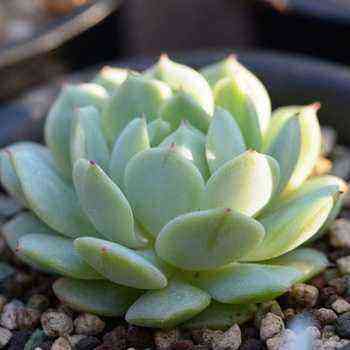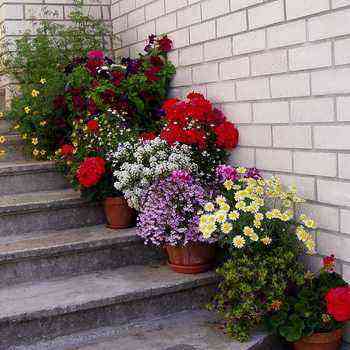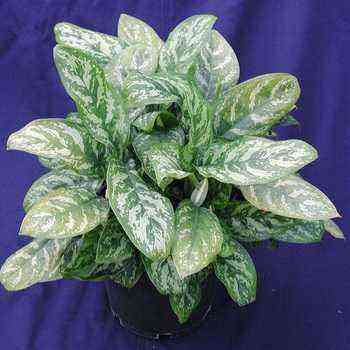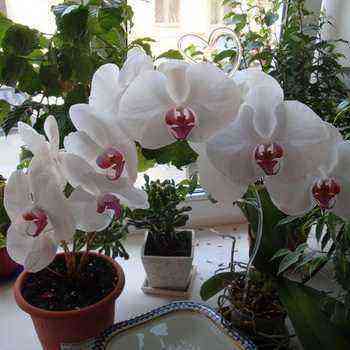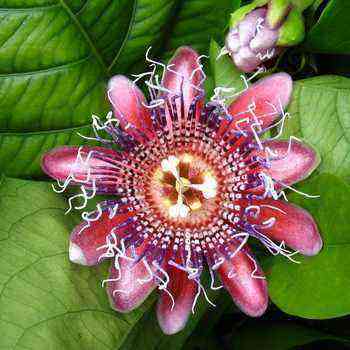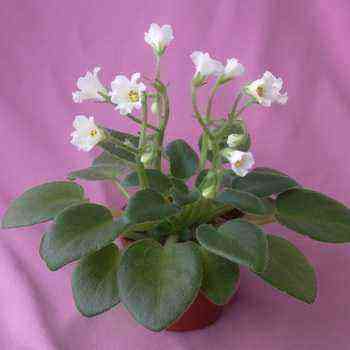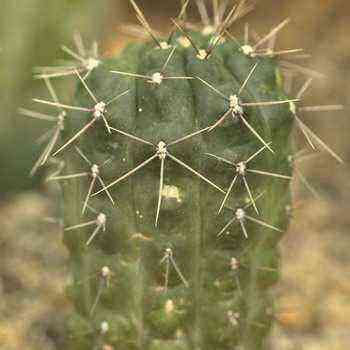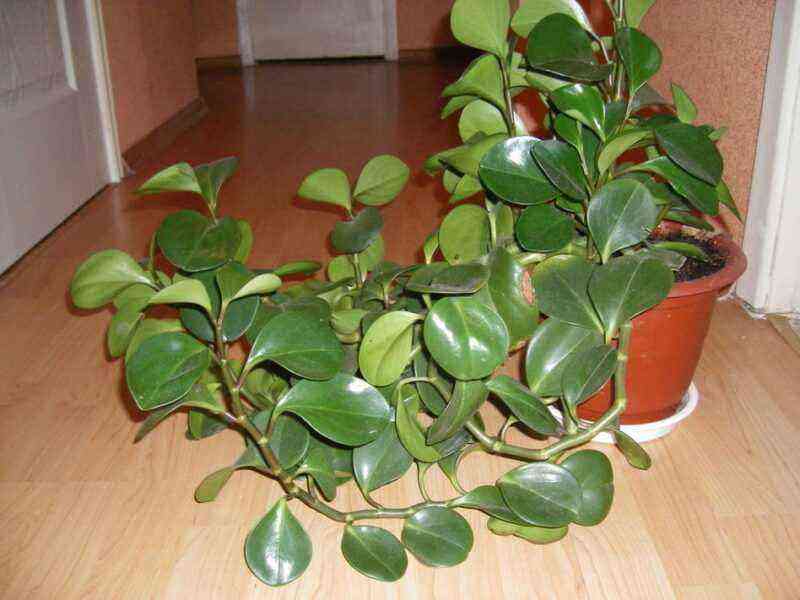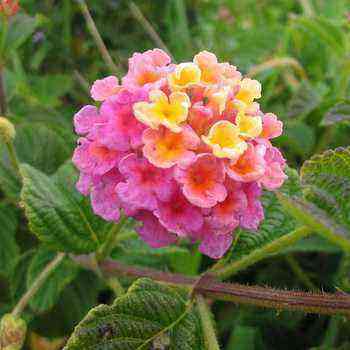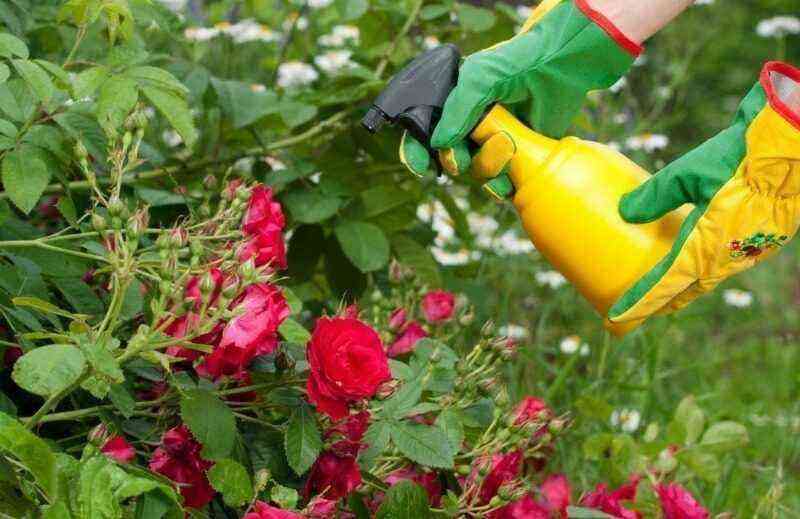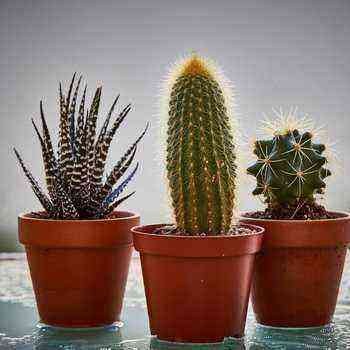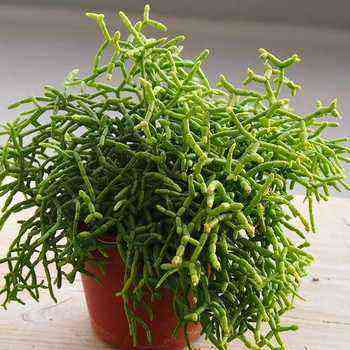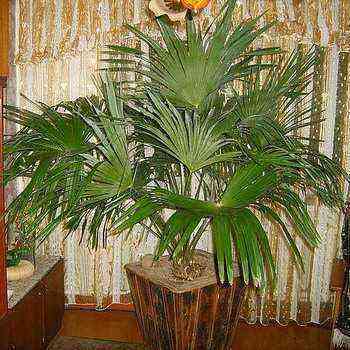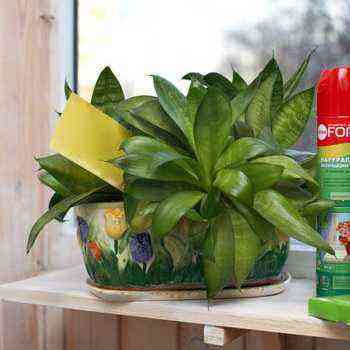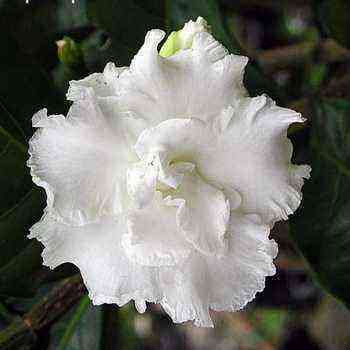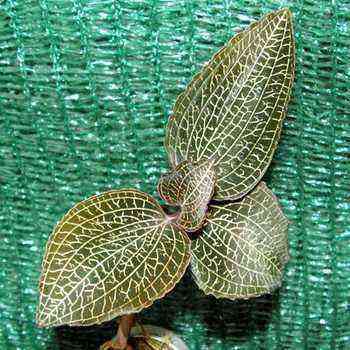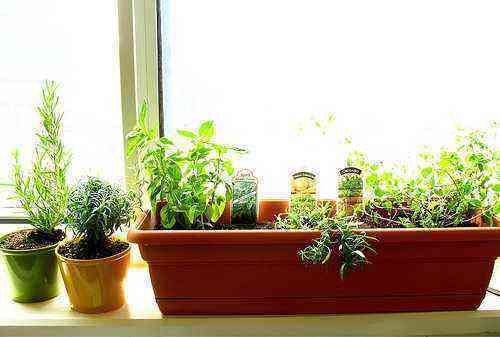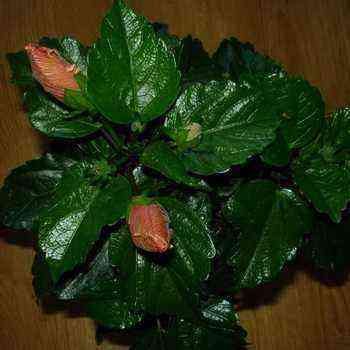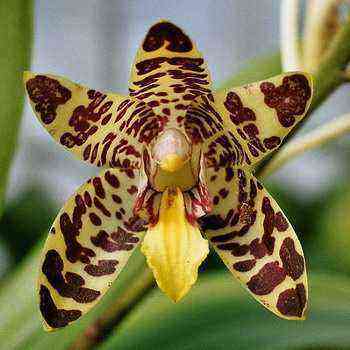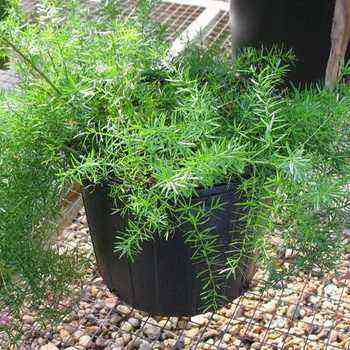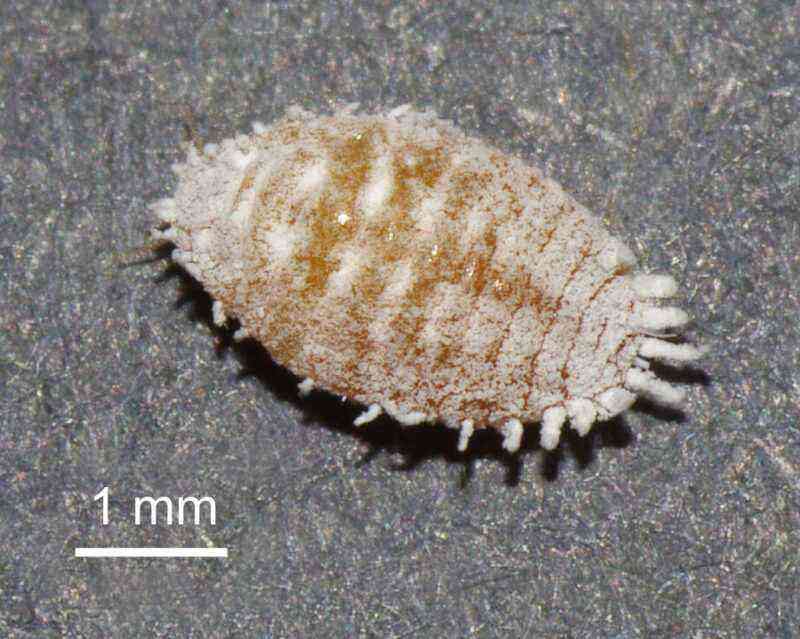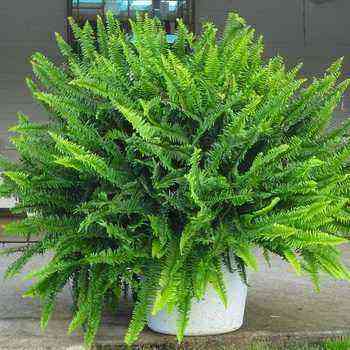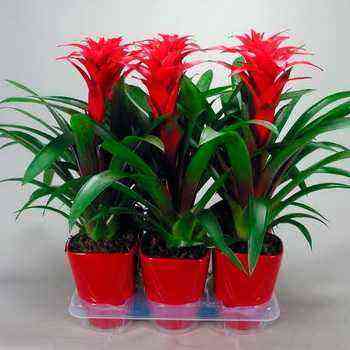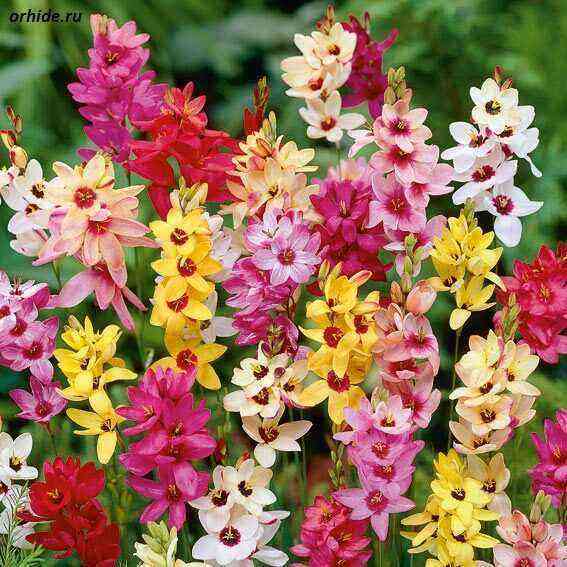The Akalifa bristly-haired plant is a shrub of the Euphorbia family, only it does not spread out, as we are used to. His homeland is considered New Guinea and Malaysia. Approximately 60% are in the Americas, and 30% are in Africa.
The second name of the indoor flower akalif, which housewives and gardeners often use in everyday life, is a fox tail.
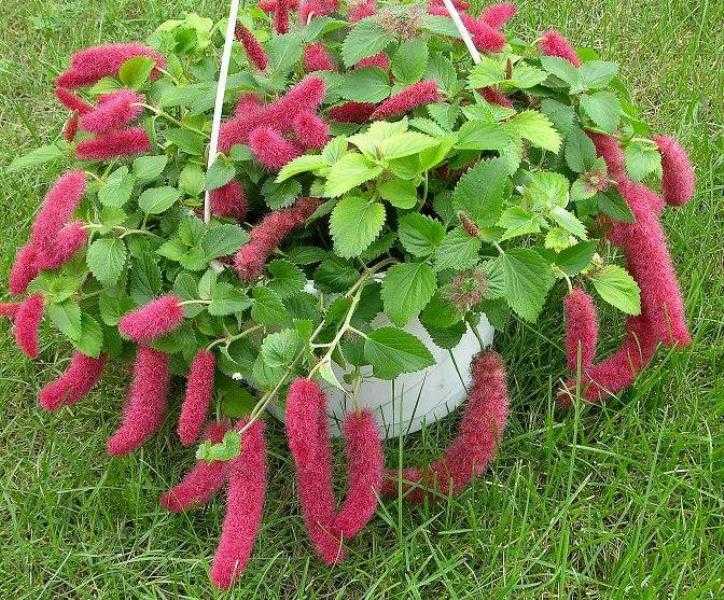
Description of akalifa with photo
As you already understood, Akalifa is an evergreen plant, small in size with ovoid leaves and serrated edges. The spikelet-shaped inflorescence consists of small akalif flowers and always attracts attention with its unusual beauty. We warn you in advance – be very careful when planting, and indeed any other work with plants, because its leaves are very poisonous and dangerous.
Most of the presented species are monoecious, but dioecious (male and female) are much less represented.
In a pot, a bristly-haired akalifa plant grows up to 80 cm, and with proper wintering it can well live up to 7 years (but, as a rule, its life span is only one season). His earrings have a maximum length of 30-40 cm, but red and white earrings can reach all 50 cm. Be sure to look at the photo of akalifa on this page.
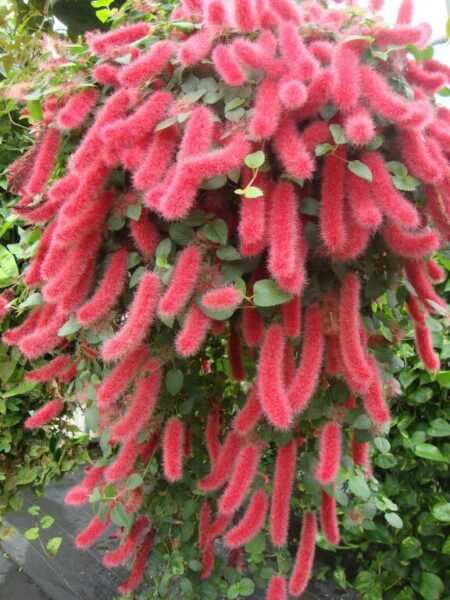
The flowering period of akalifa begins in spring and ends in autumn.
Male types of akalifa are spike-shaped, densely flowering shrubs containing several flowers at once in each node. The females are in the shape of an ear, brush or panicle with a maximum of three flowers in each of the nodes.
The male and female inflorescences are also distinguished.
Varieties of indoor flower akalif
Depending on the variety of the indoor flower akalif, the jagged leaves can vary in color from green with edging to brown with gray spots. And some species are represented by very narrow leaves.
The color scheme of the flower can also vary, but we will note the most popular ones – red-brown, bright red, pink, orange, green and cream.
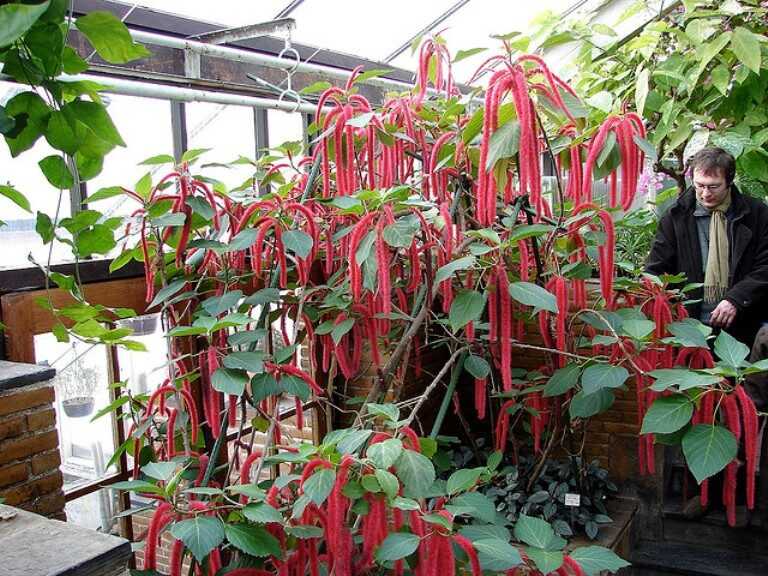
According to modern scientists, the species has more than 400 subspecies. It is clear that within the framework of the article we will not be able to tell about all of them – we will only touch on some of them.
Alba – its main distinguishing mark is its white flowers.
Acalypha hispida – grows in Hawaii and Oceania, and each country has its own name for this subspecies. It can reach up to 1,5 meters in height, but in a potted version it is about half as much. Grown from both seeds and cuttings.
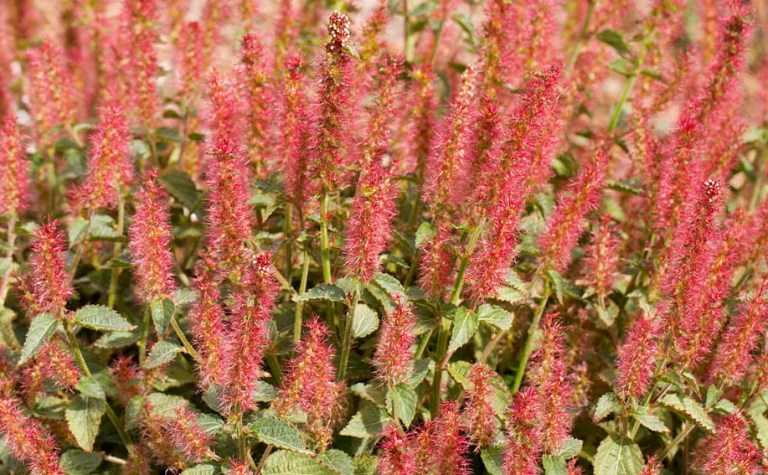
Acalypha australis is a subspecies native to East Asia. It reaches a height of about half a meter, has oblong leaves. The flowers form inflorescences up to one centimeter long. The female has three sepals and the male has four.
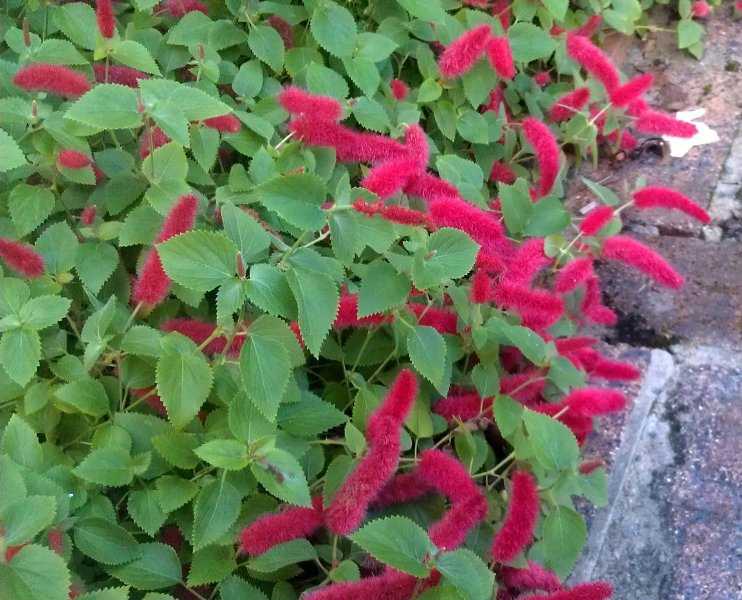
Acalypha bipartita is widely used in regions of Africa, where the product is used as the main vegetable, or simply fed to animals.
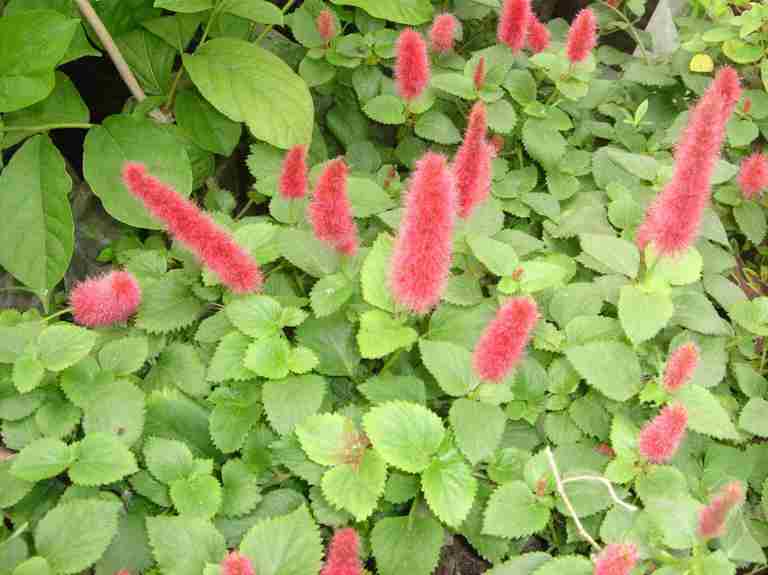
Acalypha californica is the only species native to California (not Asian and African countries). It has jagged leaves in a light green color, and each flower is composed of stamens in the form of a long thorn in red and pink.
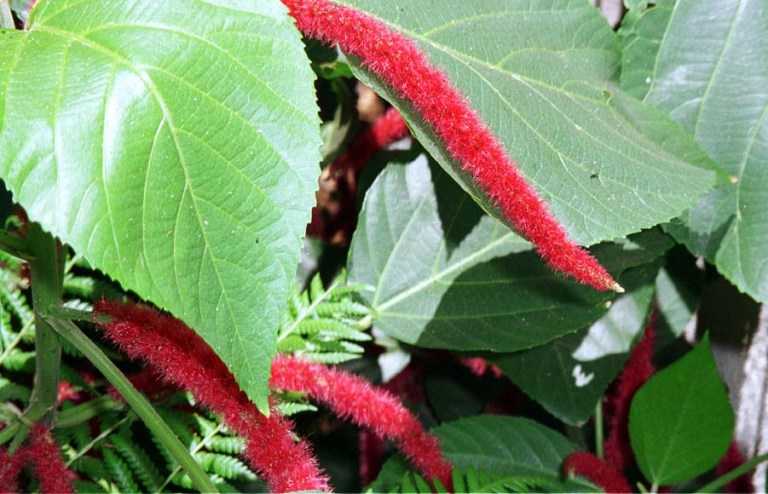
Acalypha ciliata, it also lives in Africa and is consumed by local people as a vegetable, or fed to animals. But in the Eastern and Western regions of the mainland, it is used as a medicinal plant. Otherwise, he is not much different from his fellows.

Acalypha dictyoneura is grown in Ecuador and has over six known populations.
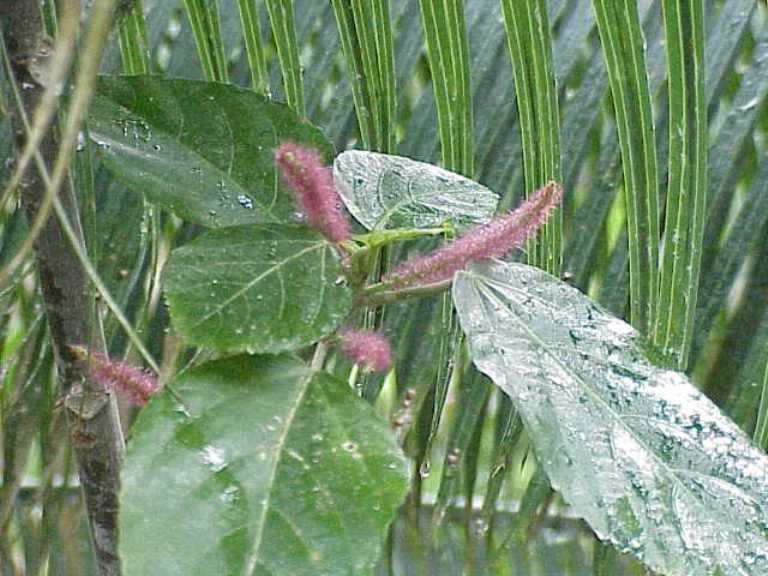
Acalypha indica is native to tropical Africa, India, Sri Lanka, Yemen and Pakistan. According to one version, it was originally a common weed. The plant can grow up to 75 cm in height with ovoid leaves, which one use as a vegetable and others as a medicine (it is believed to help rejuvenate the body, treat scabies and help cope with shingles).
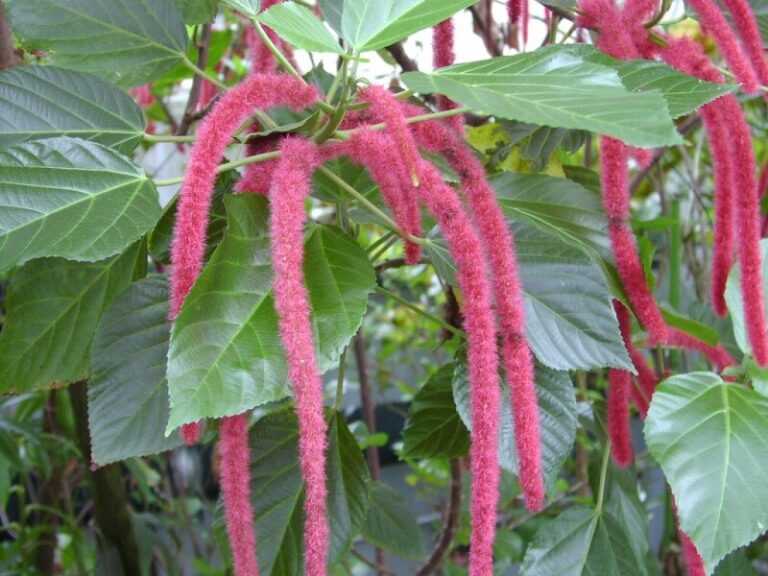
Acalypha wilkesiana can grow up to three meters in length. It has a straight stem with many branches and leaves up to twenty centimeters long copper-green with red splashes – this makes them variegated and interesting, which causes the interest of gardeners and housewives in their reproduction, as well as use in home gardens.
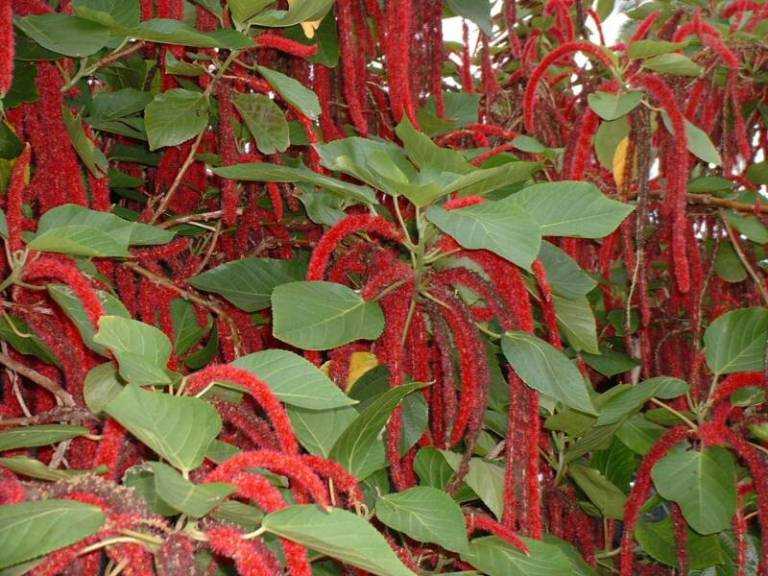
Growing akalifa at home
If you want to grow bristle-haired Akalifa at home, then you should take care of providing them with the necessary moisture in advance. In addition, the plant is very thermophilic, it is necessary to observe the temperature in the room at the level of 20-24 ̊С, and in winter it should fall below 18 ̊С. Usually it is placed over the area of the shade of the sun’s rays (but not in any case in the sun).
Planting and caring for akalifa
In order for the Akalifa plant to grow as well as possible, you need to prepare the soil as a basis from a mixture of turf, leaves, humus, sand and peat. To maintain the necessary humidity, you can put the pot on a tray with warm water and do not forget to spray the leaves with warm water, and in the summer and from February to the end of August, feed it with mineral fertilizers every two to three weeks.
If it becomes necessary to transplant a plant, then it is best to perform this action in the spring. In mature plants, the topsoil should also be renewed.
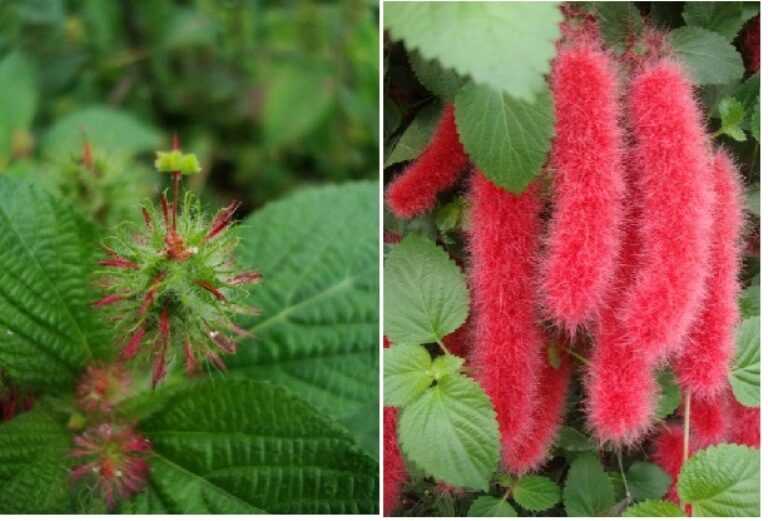
Also, the Akalifa can be updated if you cut off the overgrown shoots and leave only hemp about 20 cm high.Just do not forget that it is poisonous and wash your hands thoroughly after the work done.
Basically, caring for a bristly hair akalifa consists in regular watering, spraying with water on the deciduous part, loosening the soil and fertilizing with fertilizers that are rich in nitrogen and phosphorus.
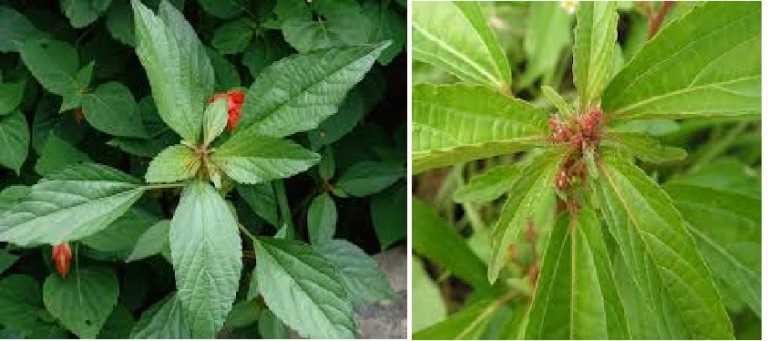
The main breeding method of the bristly-haired akalifa is by cuttings at a soil temperature of 25 ° C around March. Planting with seeds and dividing the bush of an adult plant is also possible. However, planting cut cuttings is the most convenient method. To do this, with a sharp knife, it is necessary to cut off young shoots up to 10 cm long. For rooting, they can be placed in water or dug in wet sand. As the roots grow up to 1 cm, they are planted in a fertile substrate for a permanent place of residence.
Diseases and pests akalifa
If you notice spots on the leaves, it means that a fungus has started on the akalifa plant. And on the stems, it happens, swelling from an insect bite is formed – in such cases, it is enough only to remove the damaged parts.
To prevent various diseases, it should be treated with preparations based on caratan or sulfur.
The greatest harm to the plant can be caused by spider mites and aphids, as well as whiteflies. Diseases and pests of akalifa very quickly spread to all plants, so you should not delay with response measures. Treat all plants urgently, remove damaged parts.
